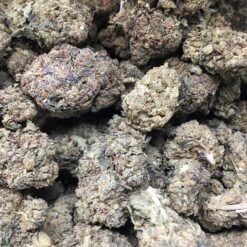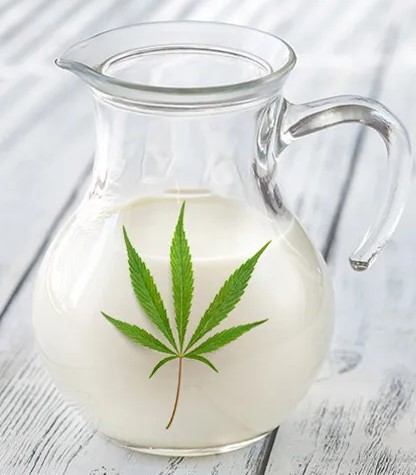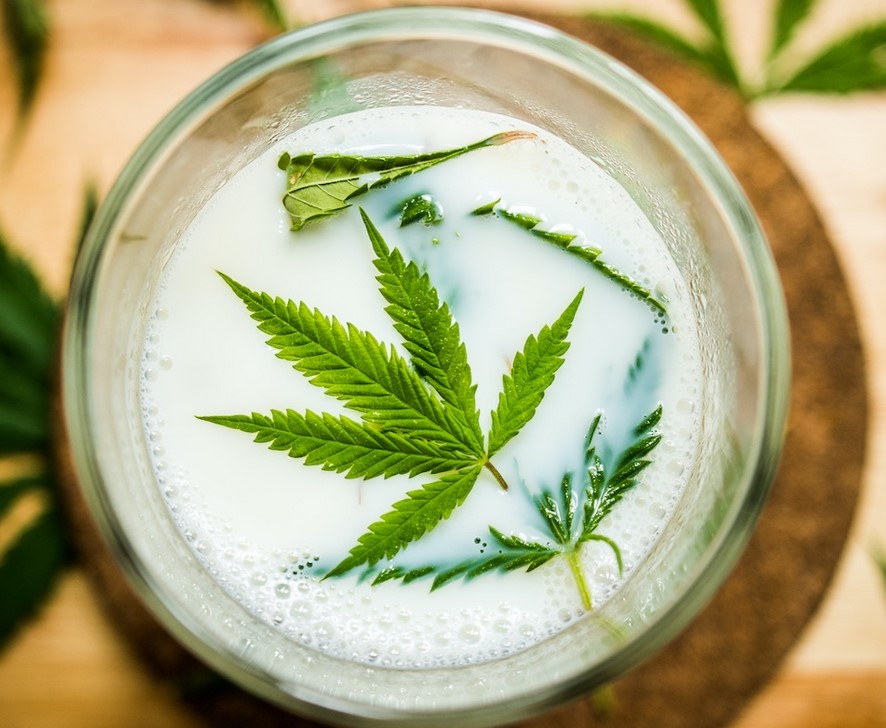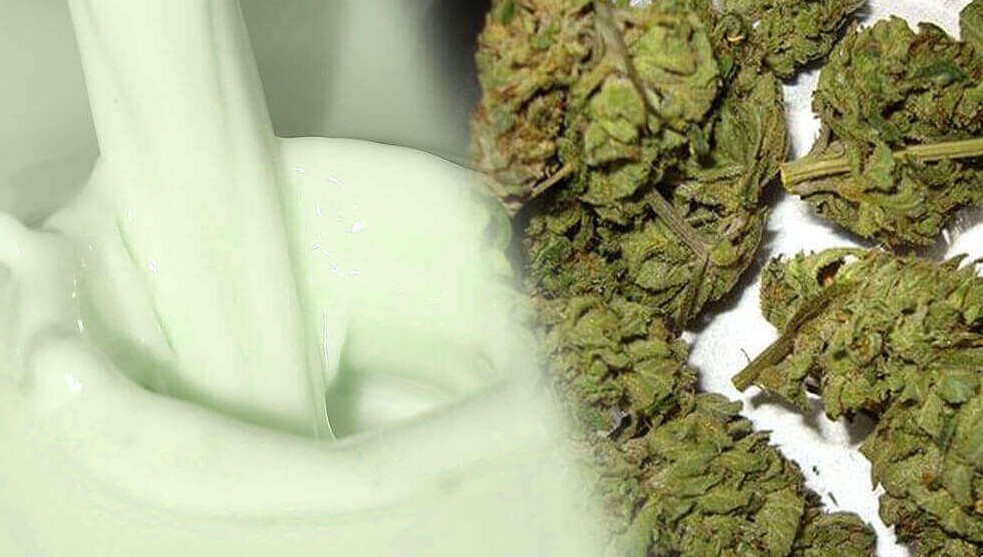-
×
 GasDank Quad Pre-Roll Pack
6 × $35.00
GasDank Quad Pre-Roll Pack
6 × $35.00 -
×
 v7-Green Crack - Indica AA
4 × $40.00
v7-Green Crack - Indica AA
4 × $40.00 -
×
 GasDank Pre-Roll Pack
2 × $10.00
GasDank Pre-Roll Pack
2 × $10.00
Cannabis Wiki
How to Make Cannabis Milk?
Cannabis milk is one of the most simple and user-friendly infusions available. To create it, all you need are cannabis and milk. It may also be used in place of normal milk in any recipe that asks for it. Keep a jar of infused milk on hand at all times, and use it instead of regular milk in my coffee every morning. The addition of a spoonful or two of canna-milk to my daily cup of coffee adds an appealing flavor while not overpowering the taste with THC. There are limitless ways to incorporate marijuana milk into your recipes!
Nutrition Facts
Cannabis plants are high in nutrients, with seeds, leaves, and stalks all being high in minerals. The following nutrients can be found in a single cup of cannabis milk:

- 900 mg omega-3 fatty acids
- 2800 mg omega-6 fatty acids
- all 10 essential amino acids
- 4 g easily digestible protein
- 46 % of the recommended daily intake of calcium
- 0 % of cholesterol
- potassium
- phosphorus
- magnesium
- riboflavin
- vitamin A
- vitamin E
- vitamin B12
- folic acid
- vitamin D
- iron
- zinc
Cannabis milk is high in protein, and it’s also a good source of the infrequent gamma-linolenic acid (GLA). This drink also includes omega-3 and omega-6 fatty acids, folic acid, vitamins A, E, and B12. It’s chock full of magnesium, potassium, and iron, all of which are essential elements of a healthy diet since they aid in the maintenance of optimal immune function.
Here are a few easy recipes that you can use your cannabis infused milk in:
- cannabis infused hot chocolate
- canna-porridge
- weed milkshakes
- cannabis infused sauces and soups
- creamy cannabis infused scrambled eggs
- delicious weed ice cream
What type of milk should i use?
Whole-fat milk is the best milk to use. The cannabinoids in full-fat milk are solely needed for absorption and effectiveness. This dish may also be prepared with non-dairy milks, such as coconut, hemp, rice, or other substances. If you’re using a low-fat or fat-free dairy, add a tiny pinch of lecithin powder (optional) to enhance absorption and quality.
How much weed should I use?
The amount of milk you drink will influence the strength of the extract. This is entirely dependent on your own preferences, tolerance, and quality of the plant material you’re using. We recommend 1-3.5 grams cannabis buds per 500ml milk, but this may be varied to suit your taste and tolerance. The tastes and fragrances of your herb will also be absorbed into the milk, so choose a strain that you believe would work well. strains with fruit characteristics give excellent results! If you want better flavor as well as greater potency, try replacing buds with leaves instead.
The strain of cannabis you use will also have an impact. An energetic, creative-boosting effect will be provided by a sativa strain, but an indica strain will produce a stone couch-lock in your milk. For optimum harmony between the two, utilize a hybrid variety.
Beneficial Effects of Cannabis Milk:
- boosts the immune system
- improves skin quality, strengthens hair and nails
- supports cardiac health
- increases brain activity
- contains anti-inflammatory substances and improves blood circulation
An Easy and Fast Recipe to Make Weed Milk at Home
Although cannabis milk is available for purchase in a few health-food stores, it is rather costly, so if you’re brave enough in the kitchen, go for it.
To produce your own cannabis milk, you’ll need the following: half a cup of shelled raw cannabis seeds and about a liter of drinking water. A piece of cloth for final filtration should also be prepared.
The seeds are ground and strained in a blender for three minutes. The milk should be filtered through a cloth to provide you with your drink, which may be consumed right away. To achieve the greatest impact,
Great Alternative
This cannabis milk is wonderful if you’re looking for a vegetable substitute for milk and have tired of rice, almond, oat, and coconut milk. It’s high in nutrients and has a nice taste.
Also, keep in mind that although you dislike this milk, it is possible to consume the seeds – they’re considered a superfood and should be included in any person’s diet who wishes to improve their health.

Ingredients
- 7 Grams Ace of Spades Cannabis Buds (or leaves/trim)
- 1 Litre Milk (full fat preferably)
Instructions
- To improve the usefulness of this recipe, decarboxylate it first. Preheat the oven to 240°F (115°C). Using a mixing bowl or a food processor, coarsely grind your cannabis and spread it out on a baking sheet or dish in an equal layer. Cover with foil and return to the oven for 25-40 minutes. Allow to cool after removing from the oven
- Place the milk in a pan and bring to a boil. Allow to simmer slowly on low heat or in a double boiler to prevent scorching.
- Add the decarboxylated cannabis to the simmering milk and stir continuously until it is fully immersed in the milk.
- Allow 45-60 minutes for the cannamilk to boil. Do not let it boil. Every 10-15 minutes, stir the contents of the pan. Your milk will take on a greenish-yellow tinge depending on its age, strain, moisture, and quality.
- Remove the cannamilk from the heat and set up your straining equipment (sieve, cheese cloth, coffee filter), as well as a bottle or container for storing the strained weed milk.
- To eliminate and discard the cannabis waste, strain out the marijuana through a straining bag or filter. Remove as much excellent milk from the herbs in the strainer or filter as possible; none should go to waste.
- Allow the filtered milk to cool before drinking or storing it in the refrigerator. Drink it cold, warm, or use it in an infused dish.
Notes
- A teaspoon of lecithin can help your cannamilk work better by aiding in the THC’s binding to lipids and boosting bio-availability.
- If you’re making a milk thc drink, full-fat milk is not necessary, but the higher the fat content, the better. The THC binds to fats, so if you’re using a low-fat milk, we recommend adding lecithin to help enhance absorption. Coconut milk has a wonderful taste and is simple to make!
- Do you want to know how to make CBD-infused milk? Instead of marijuana, try replacing the ingredients in this recipe with CBD hemp flower buds or CBD hash. Rather than the recommended 115 degrees Fahrenheit, I recommend decarboxylating CBD hemp flower at a temperature of 125 degrees Fahrenheit.


